Cusco and Machu Picchu
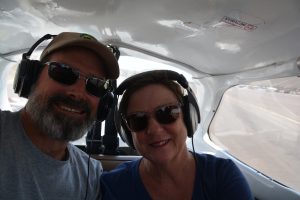
We’ve taken to the air to get a ‘closer’ look at the famous Nasca Lines near the coast in central Peru
Our little four-seater Cessna 172, probably as old as us, banked low and steeply to the right above the Peruvian desert, our stomachs following close behind. Javier, our co-pilot, pointed out the window and said, ‘Can you see the monkey?’ And sure enough, 200 metres below us, scrawled out in the sun-baked desert rocks was a cute little monkey with an exaggerated curled tail. The monkey had followed aerial sightings of the whale, fish, condor, spider and astronaut, all carved out of the harsh Peruvian desert. Yes, we were in Nasca and checking out the famous Nasca Lines from high above. Very cool.
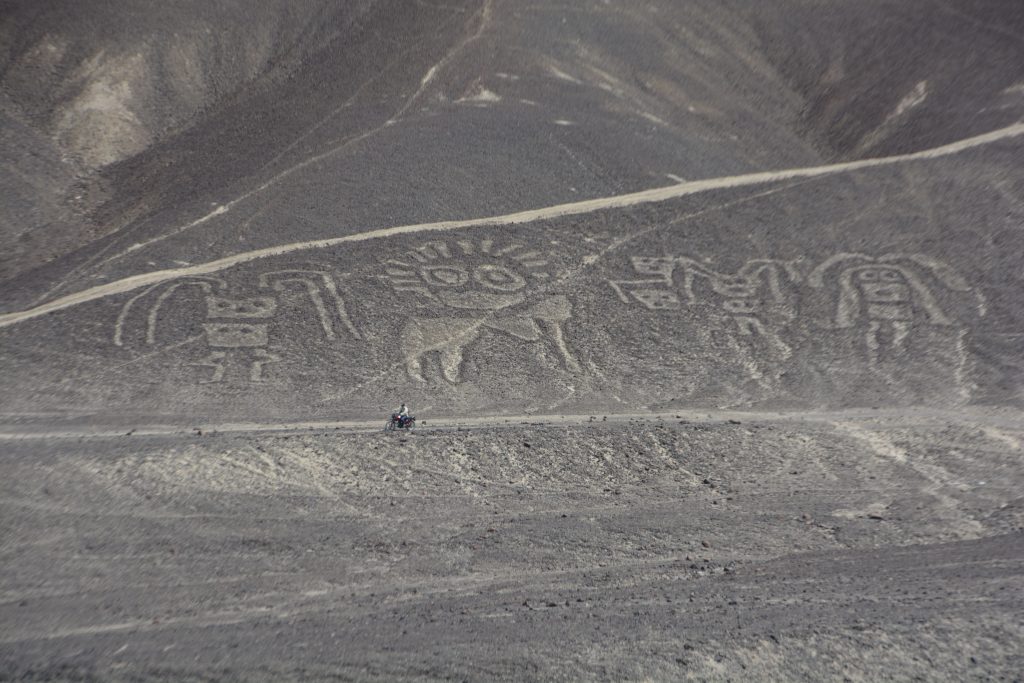
These amazing desert drawings are near the Nasca Lines but separate markings on the stark Peruvian desert – we climbed a tower to see them. The passing motorbike rider gives it a bit of perspective.
We had stopped at a couple of the towers that you can climb to see these famous lines, geoglyphs and animal figures but decided to splurge and do the 30 minute scenic flight that provided the full picture. The experience at the airport was a bit chaotic with 12 different airlines vying for your business and everything being negotiable, including the size of your plane, flight path, cost, method of payment, even credit card fees.
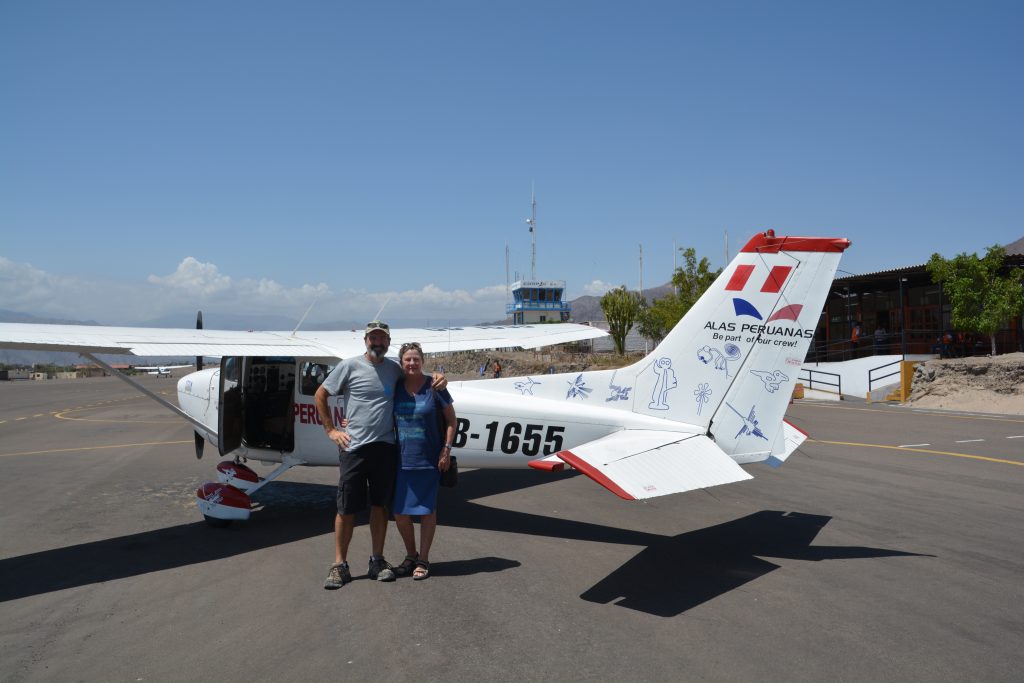
The whole airport scene at Nasca was a serious hassle and but eventually we settled on an airline, price, pilot and route over the famous desert lines
But it all came together once we got in the air and could take in the dramatic desert, the green strip of land made fertile by the river running through it and these magnificent designs, shapes and creatures all formed in the desert by long lost people over 1,500 years ago. Experts can’t agree on exactly how or why these markings were made in the desert but their mystery adds to their value and the very special experience of seeing them from above.
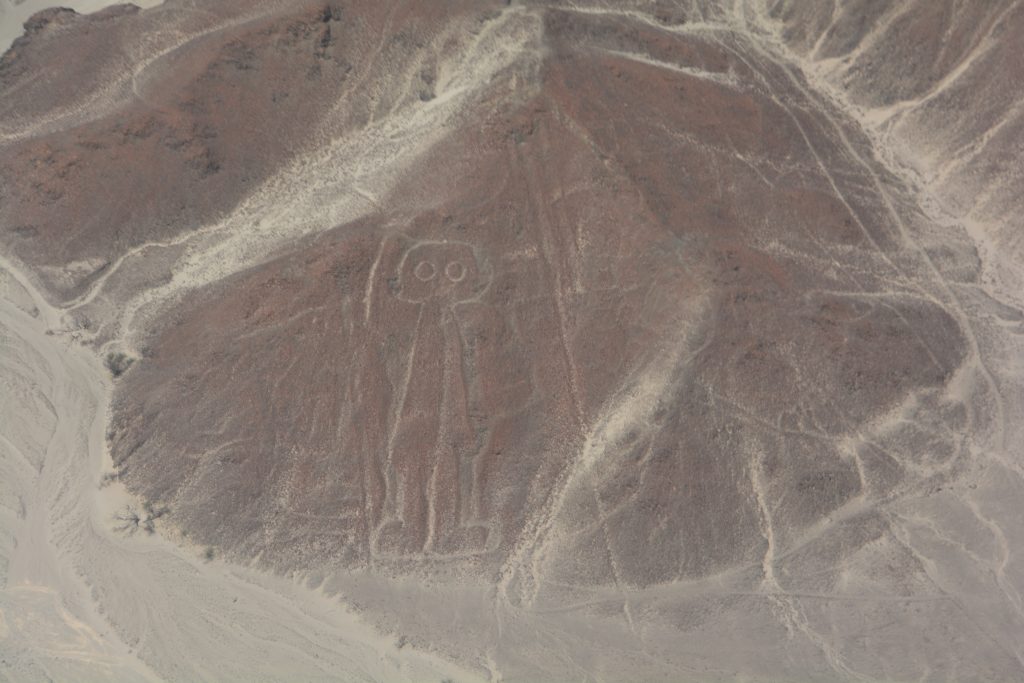
The only drawing that was on a hill – the astronaut, the name given today but perhaps not what the artists were thinking about 1,500 years ago
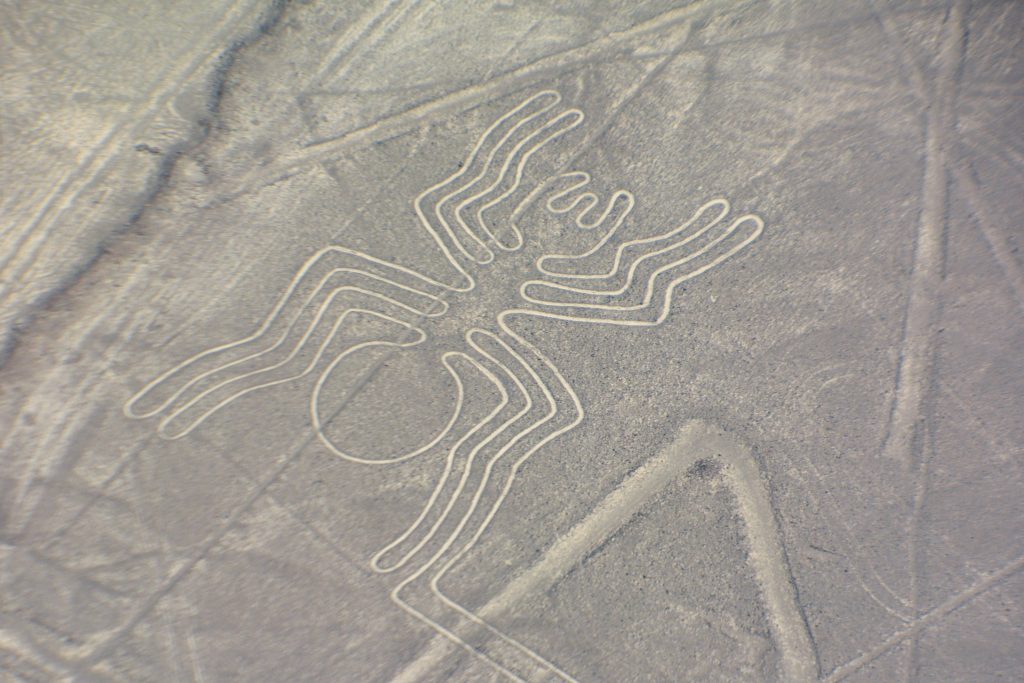
I preferred the spider, can’t imagine how they drew this thing in perfect shape but it is the most detailed of the drawings
While we were up there we also saw a dog, hummingbird, flower, flamingo, hands and frigate amongst all the intersecting lines that often go many kilometres. The whole experience was a bit mind-boggling as well as awe-inspiring and stomach-churning.
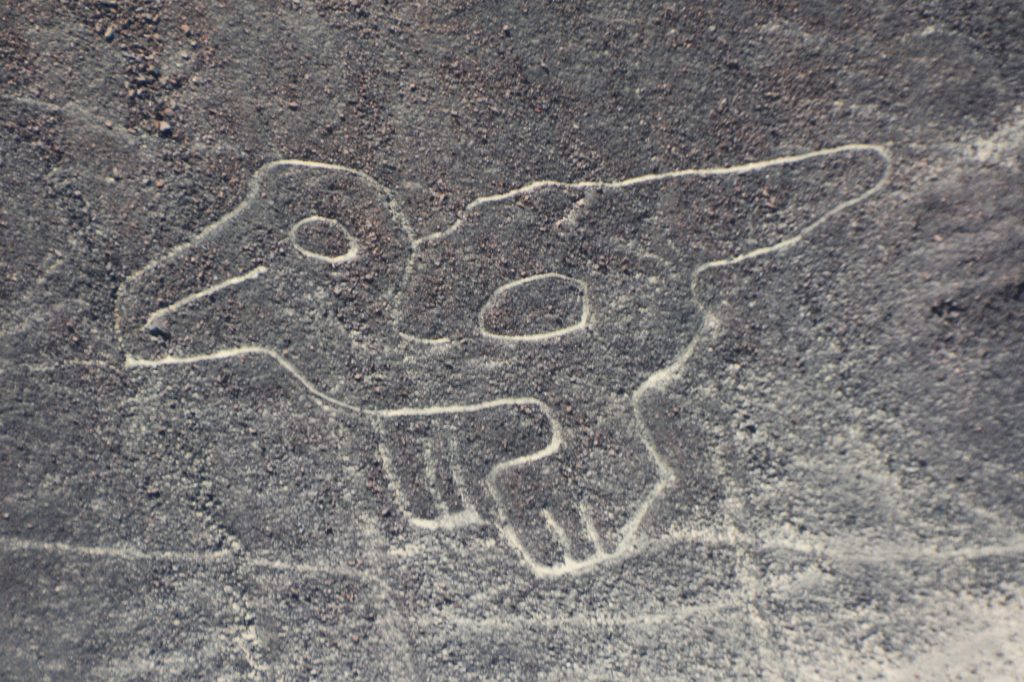
This is a bird or a dinosaur or whatever you want – just a sample of the dozens of huge drawings in the desert
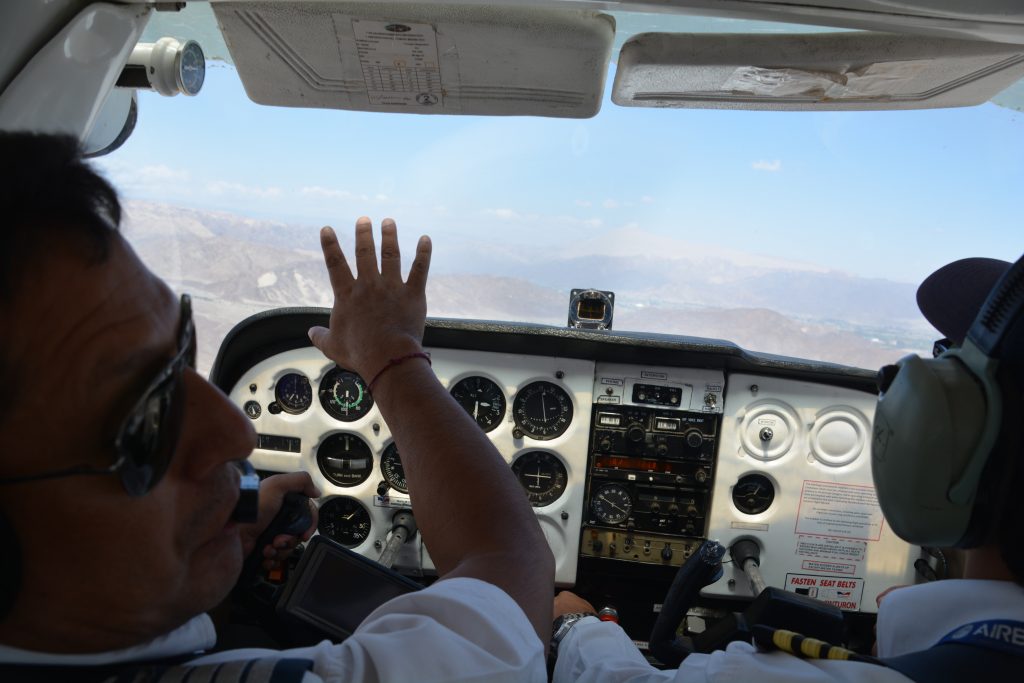
Our pilot was happy to provide additional commentary, not always in an understandable language, but we preferred both hands on his primary job
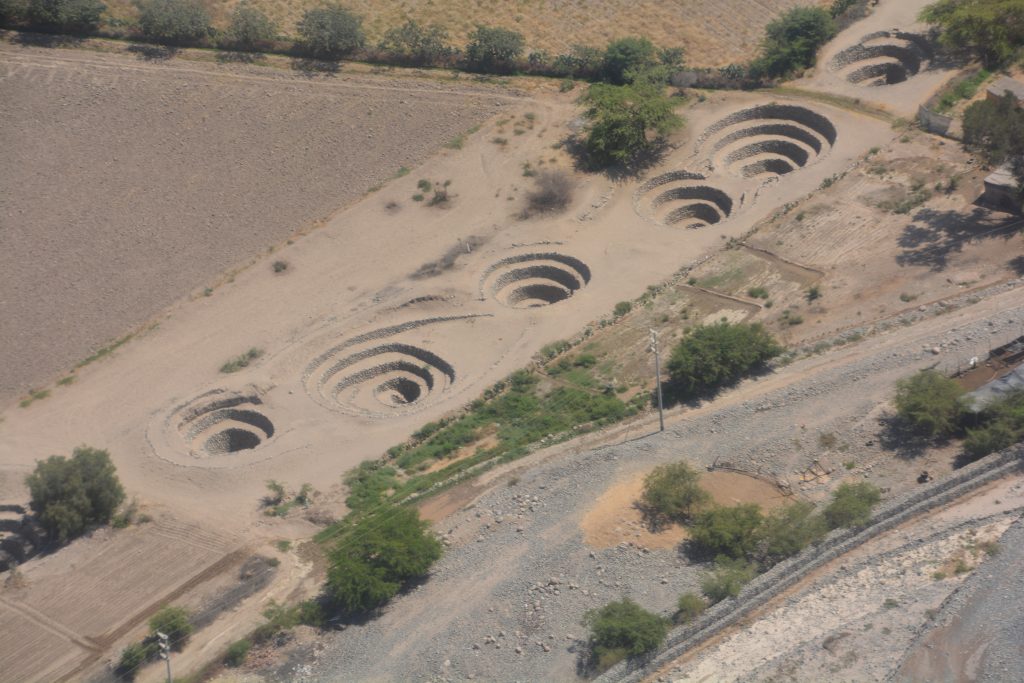
The ancient indigenous people dug deep spiral wells in the desert, including these which are still visible from the air
Then it was up, up and away as we left the coast and wound our way up barren desert mountains towards the ancient Incan capital of Cusco. But Cusco is over 650 kms (400 miles) away on the other side of the towering Andes mountains and we knew it would be a hard push over the next couple of days on these slow winding roads to get there.
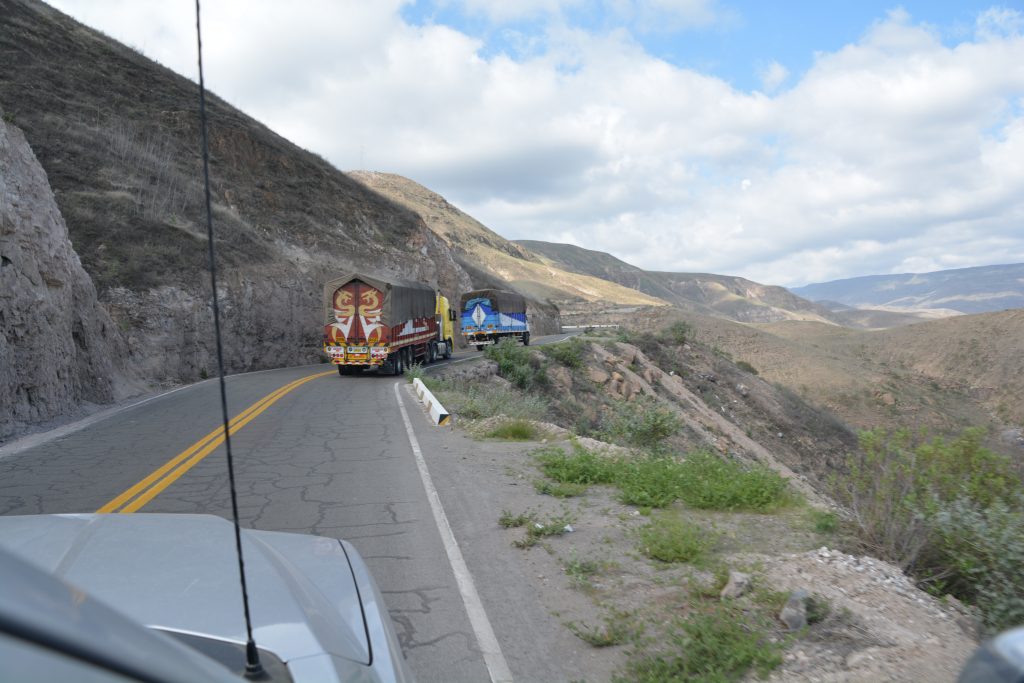
The steep winding roads were extremely slow going, especially when there always seemed to be a congo line of slow trucks in front of you
But push we did, the first afternoon climbing to 4,100 metres (13,500 feet) on a road like a sidewinder snake making its way up the mountains. On the high plains near the top we saw our first vicunas, a threatened wild camelid with its very cute small head and long neck, looking a bit like an alpaca or llama.
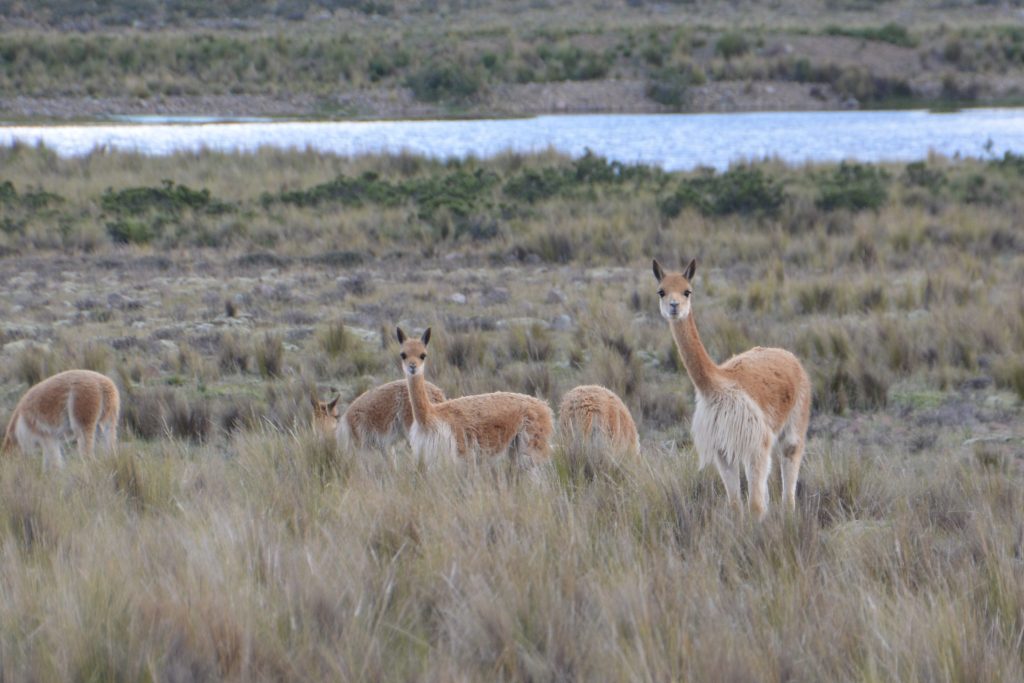
Vicunas are very cool with their big eyes, small heads and cute faces but they are very skittish and hard to photograph
Out of breath and out of light we camped that night in the secure grounds of a restaurant in the small mountain town of Puquio at 3,100 metres (10,100 feet), knowing we had covered less than a quarter of the distance to Cusco.
The next day it was more of the same, climbing through the mountains to a peak of 4,550 metres (14,950 feet) and for two hours crossing the high plains above 4,000 metres. This was a magic place, long open plains of tuffy grass, vicunas, llamas and alpacas grazing in large herds, a beautiful blue sky as far as you could see. Shallow lakes dotted the rolling green plains, even a few flamingos going about their business.
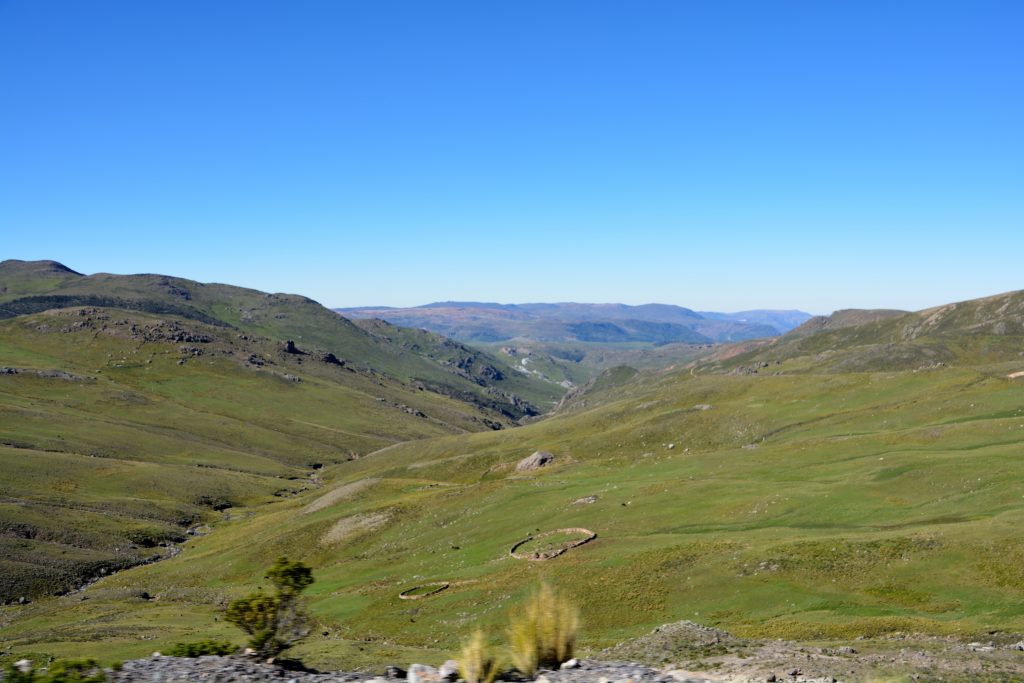
The scenery was majestic and the altitude was dizzying – a great experience – see the stone-fenced corral in the distant foreground
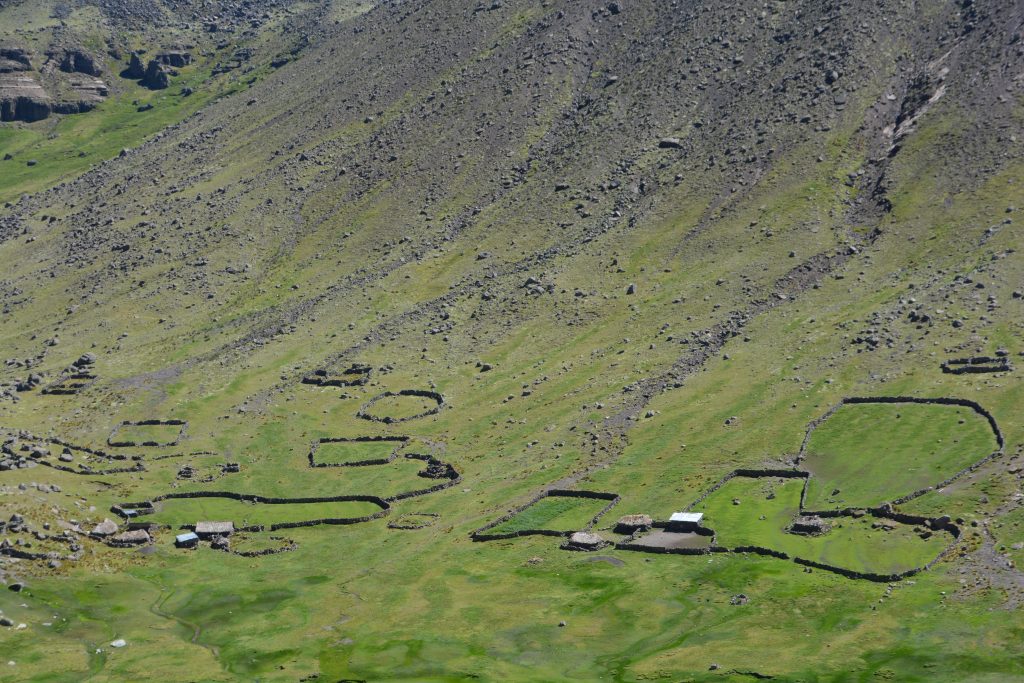
Imagine the hard work living in these extreme conditions and building these stone fences for your meagre herd….amazing!
There were no jagged peaks, snow capped mountains or hanging glaciers in sight – we were on the top of the world. I never would have imagined this scene at such an altitude. And we later learned that we had crossed the continental divide, meaning that as we descended the little creeks flowing with us would eventually drain into the mighty Amazon River and start their long trip to the Atlantic Ocean.

Hard to imagine what life would be like living in a desolate and high altitude place like this but we felt lucky to have a chance to see it for ourselves

This scene really took me – a young girl responsible for the family herd…hopefully an education is part of the package
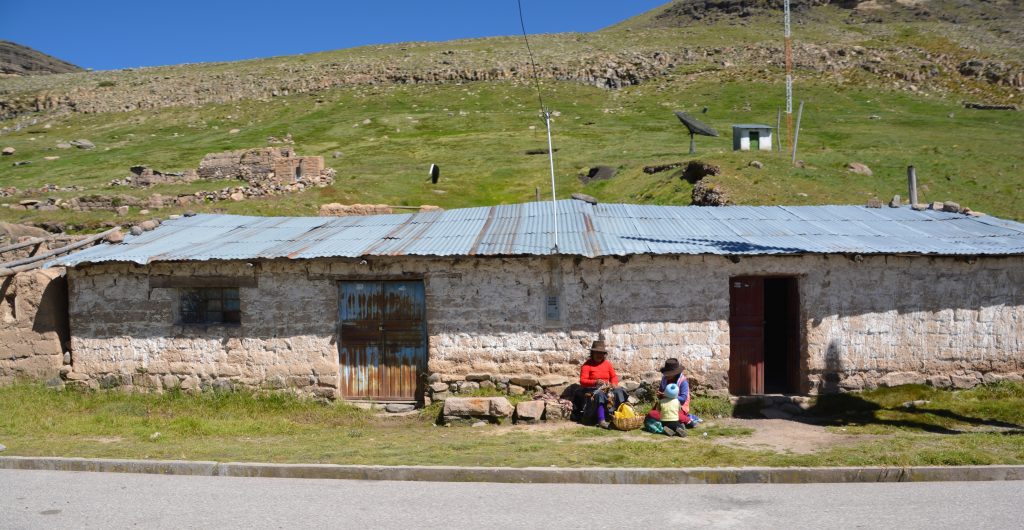
Every village has a story but they seem to revolve around a simple life adapting to the special local conditions
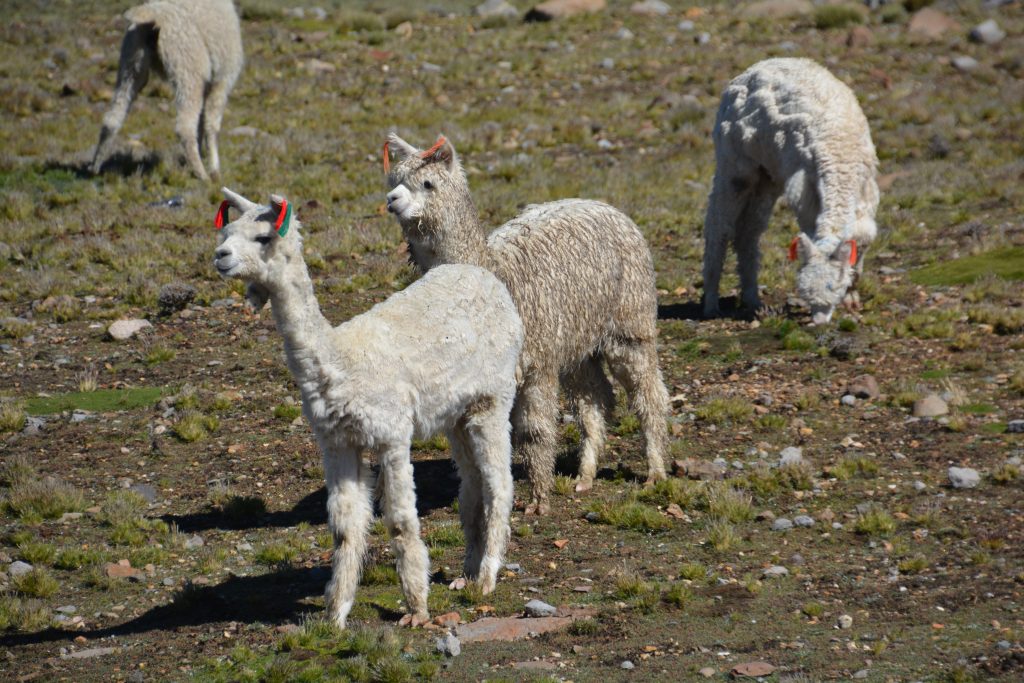
Alright, who doesn’t want to take one of these guys home? The little flags on the ears mark ownership.
During the course of the day we dropped down to below 2,000 metres and twice climbed back up to 4,000 metres, majestic scenery in all directions. The roads were good, the traffic was light and the endless switchbacks, hairpin turns and steep roads provided spectacular views on a continuous loop. For a couple of hours we followed the fast flowing Pacachaca River through its narrow gorge with it’s near-vertical walls on both sides. I can’t overstate the extraordinary beauty we saw on this drive and how we were wowed by the whole experience, despite pulling into historic Cusco ten hours after leaving camp.
Ah, Cusco. Capital of the ancient Inca people, nestled amongst the mountains at 3,500 metres, today arguably the go-to tourist destination for all of South America because it is the launch pad for visits to the iconic Machu Picchu site. In addition to Machu Picchu there are a handful of other can’t miss ruins in the nearby mountains and the city itself is packed with history, culture, magnificent churches, plazas, palaces, colour and local flavour. Julie and I planned to spend a couple of days here to take in all the sites.
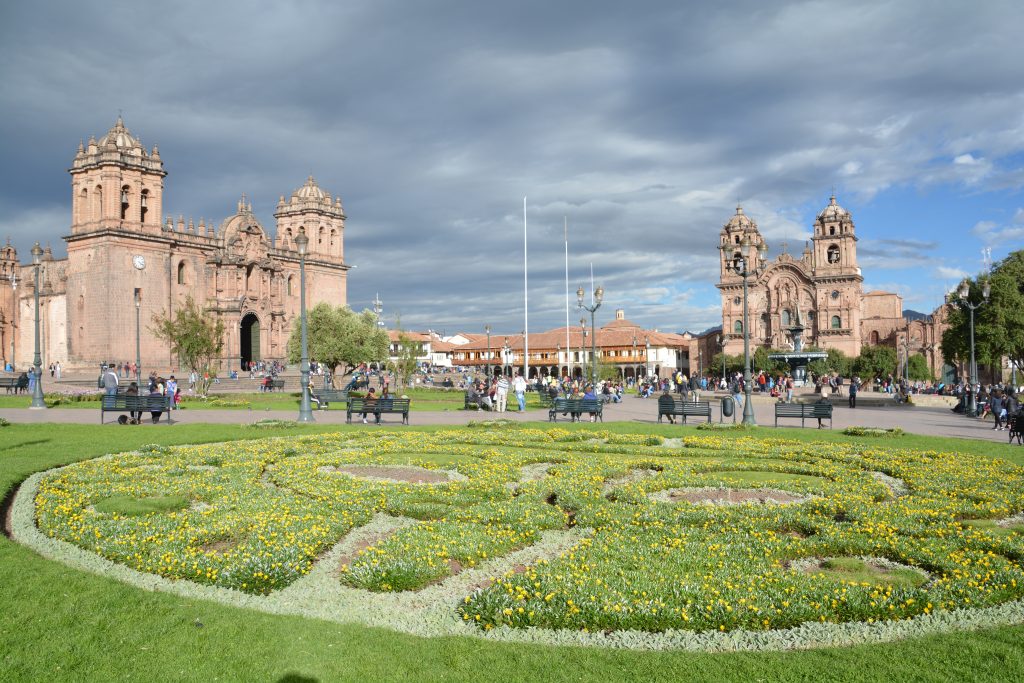
The Plaza de Armas of famous and historical Cusco with its Spanish colonial Cathedral on the left and large church of La Compania de Jesus flanking the large open area
And as it happens, I’ve been to Cusco before. Way back when I was a young lad 41 years ago I did some serious trekking in the Andes, including the Inca Trail and visiting Machu Picchu, Cusco and the rest. I still have strong memories of the whole experience but was looking forward to matching those memories with today’s reality.
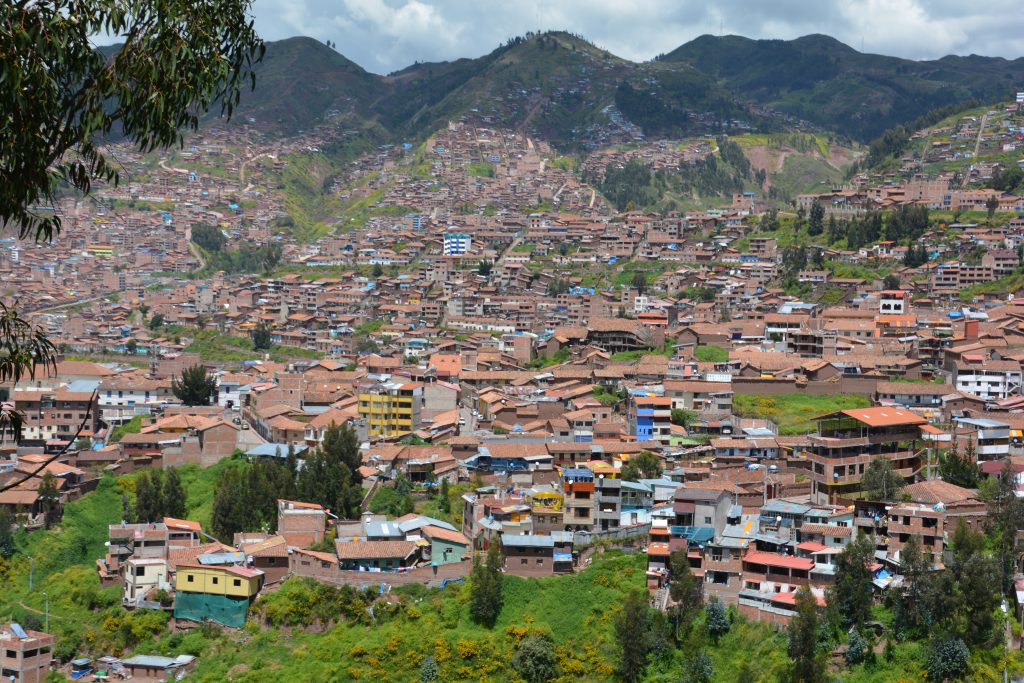
Cusco is based at 3,500 metres, surrounded by the high Andes and the capital of the ancient Inca people
We started our day at the Incan ruins of Sacsaywaman, which of course everyone calls Sexy Woman, situated on a hill overlooking Cusco and only about 100 metres from where we camped. Sacsaywaman is historically significant because it was the scene of the last stand of the last Incan king against the overwhelming forces of the Spanish in 1533. Many thousands of Incan warriors died at the scene although the king managed to escape which only prolonged the inevitable.
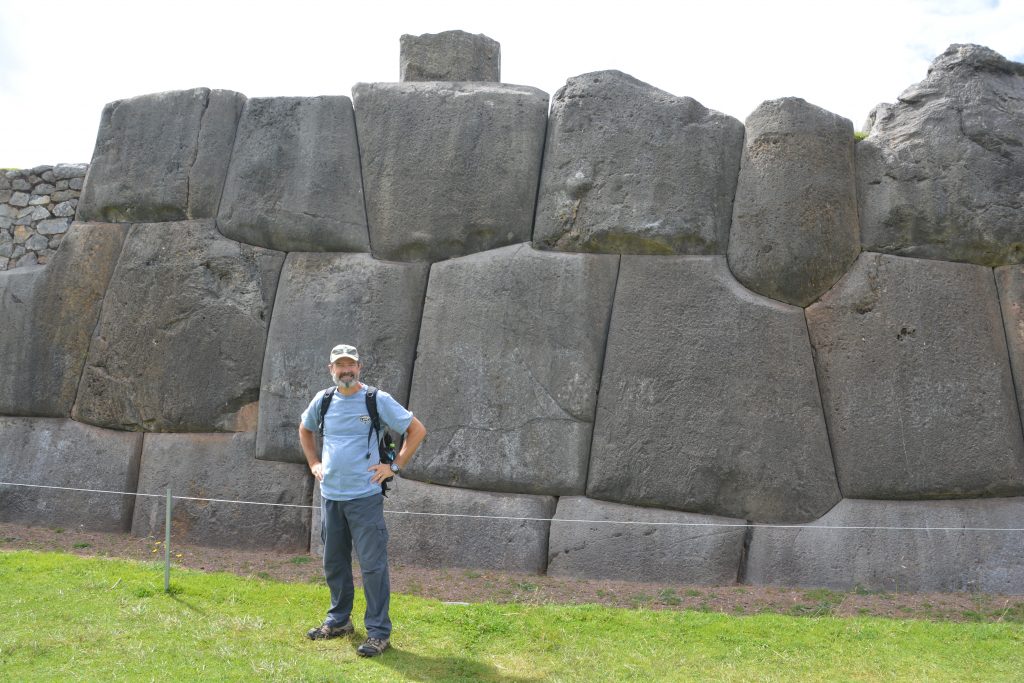
When I saw these beautifully integrated stones at Sacsaywaman I had this huge sense of deja vu – I had stood in this exact spot more than 40 years ago
We explored the remains of this great centre and marvelled at the architecture of the stone walls which were pieced together in random shapes without mortar and have withstood war, earthquakes, looters and tourists for 500 years. Sacsaywaman was a great way to start the day.
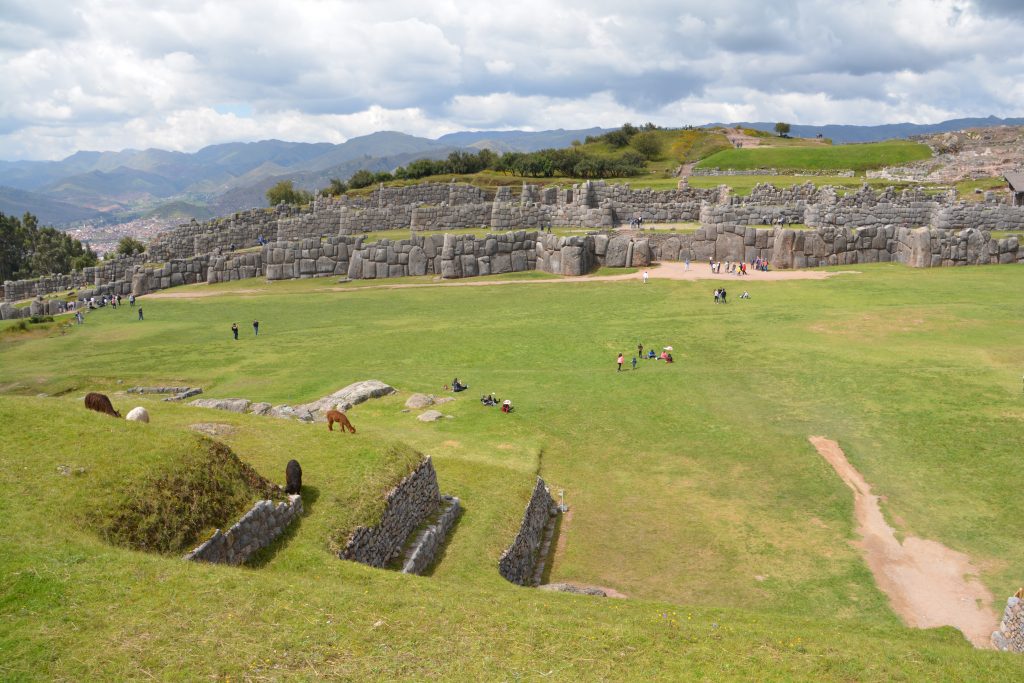
Sacsaywaman has a special place in Incan history as a place their brave warriors took a last stand against the invading Spanish – today it looks beautifully and peacefully benign
Cusco was the ancient capital of the Incan empire which stretched from today’s northern Chile to southern Colombia. The Spanish destroyed much of what the Incans built but they in turn built a number of fabulous buildings, including a cathedral, many churches, palaces, plazas and other buildings which still stand today. While there are still some remnants left over from the days of the Inca, most of what visitors see today are from those who destroyed the Incan empire and dissolved their culture.

Some scenes are timeless, including these ancient steps being negotiated by a woman in her traditional dress
Nevertheless, Cusco is very cool. We walked amongst the plazas, churches and narrow cobblestone streets for most of the day, absorbing the historic significance of the city and the colonial buildings which remain today. Women in traditional dress still walk the streets and you can see many indigenous faces amongst the locals. We also bought tickets for Machu Picchu and the train trip to take us to the base of that mountain. And I enjoyed a bit of reminiscing and déjà vu-ing from my time there more than four decades earlier.
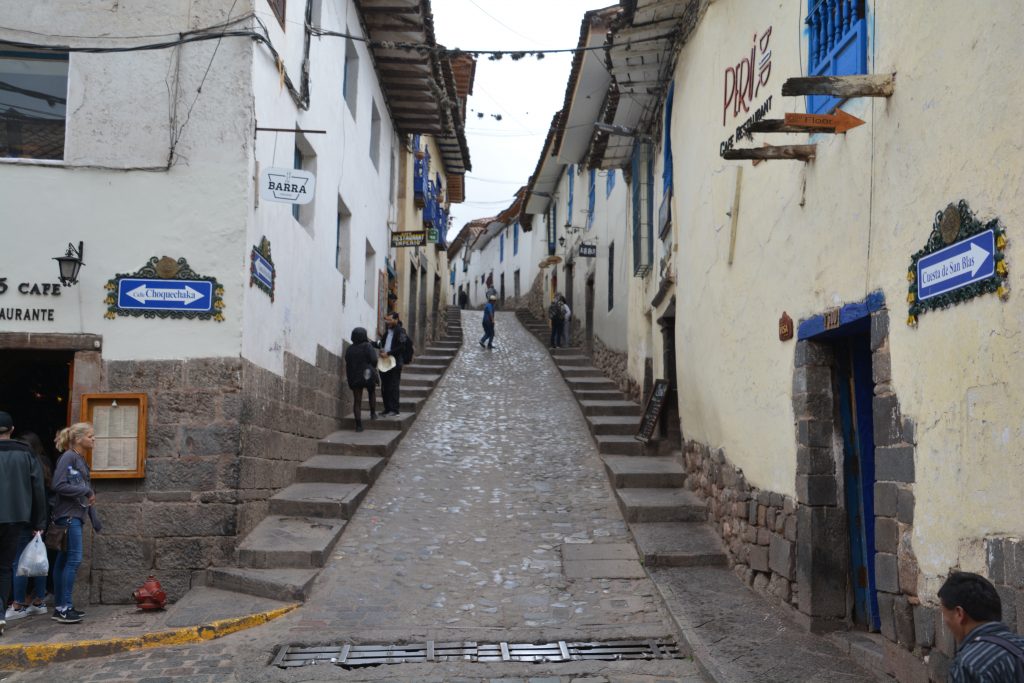
A quiet side street of Cusco shows a moment frozen in time – old building and narrow steep streets, just like its always been
But visiting Machu Picchu and the surrounding ruins in what is called the Sacred Valley is not cheap. The train trip from Ollantaytambo to Agua Calientes, a two hour ride, is US$110 round trip per person. Entry into Machu Picchu is $50 per person, the shuttle bus trip up to the ruins is $24 and a ticket to get into the other ruins in the valley is $40. So for two people you’re looking at US450 – what call a major tourist jab.
But it was worth every penny. We drove up and over the mountains surrounding Cusco and descended into the famed Sacred Valley, carved into the mountains by the raging Rio Urubamba. From the Incan town of Ollantaytambo, continuously inhabited by Incans for 1300 years, we caught the PeruRail train down the narrow gorge to the isolated town of Macchu Picchu Pueblo (also called Agua Calientes).

These two senior citizens of Ollantaytambo take a breather in the main square of their beautiful town
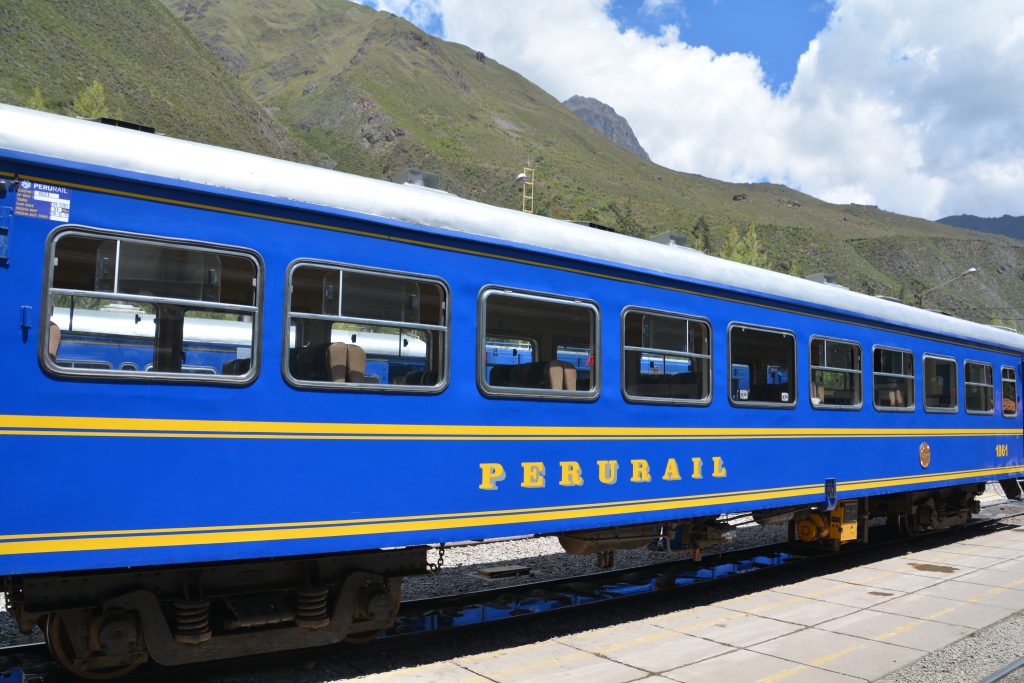
Visiting Machu Picchu, perhaps the most famous tourist attraction in all of South America, is not easy and involved many forms of transport, including this scenic train ride
Wedged between high vertical walls of the stone mountains and banked by two rivers, this town offered the nearest civilisation to Machu Picchu and is a choke point for transient tourists. We caught a shuttle bus which took us up more than 20 dramatic steep dirt switchbacks until we finally arrived at the gates of Machu Picchu.
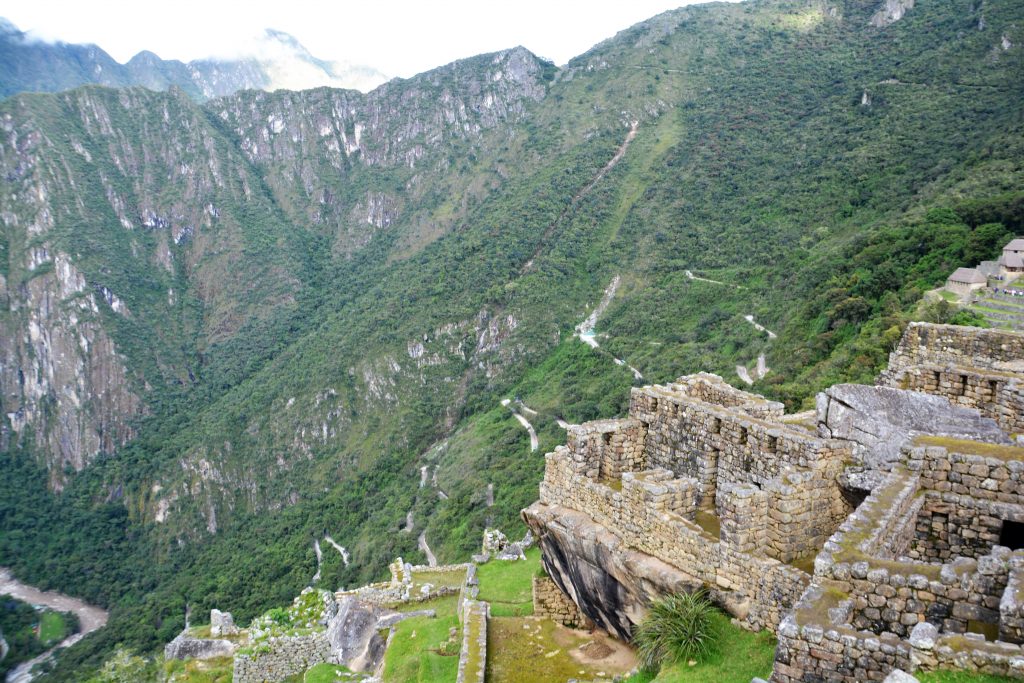
This view from Machu Picchu looking backwards provides a glimpse of the winding dirt road that brought us up the face of the mountain to the ancient ruins
This iconic Incan city, lost in the jungle and preserved for centuries because the Spanish never found it, only ‘discovered’ in 1911, probably used as either an elaborate ceremonial site or perhaps the king’s imperial retreat, is built on the cliff top of a bend in the river about 1350 metres (4,400 feet) above the river. The site commands extraordinary views in all directions, both looking down into the abyss of the narrow river gorge and up to the snow-capped mountains. And acting as backdrop to the whole scene is Waynu Picchu, a mountain pinnacle that overlooks the whole site, like the ultimate guard to this ultimate site.
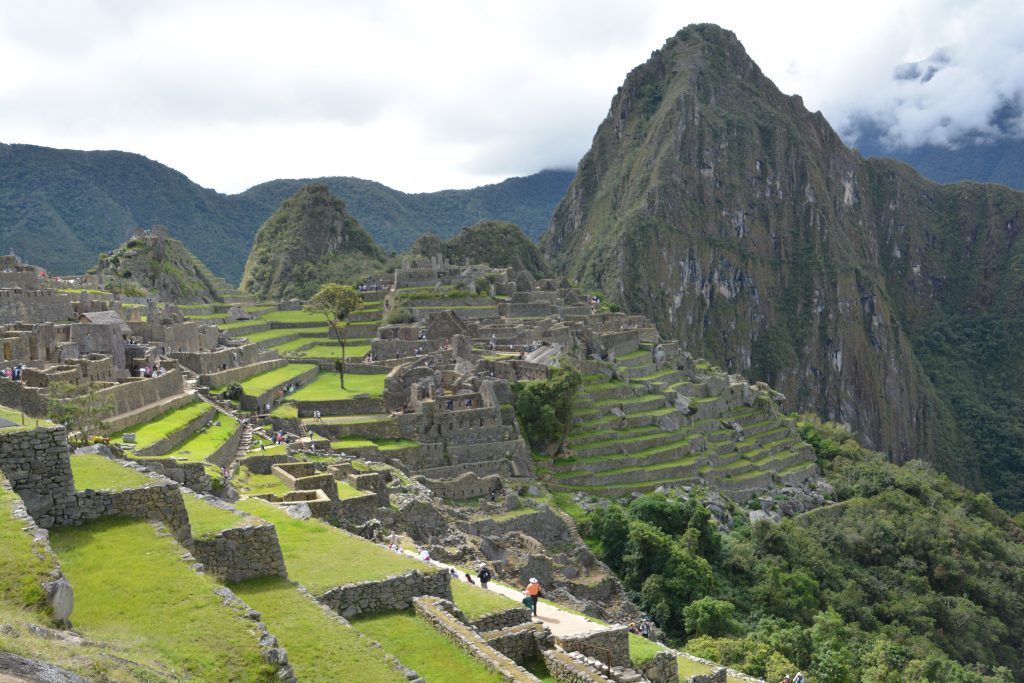
Our first look at the grandeur of Machu Picchu, set in on a dramatic and remote site in the Andes…it doesn’t get any better than this moment
Gasping for oxygen at these high levels and gasping in amazement at what we were seeing, Julie and I first climbed up to the highest level of the site for panoramic views of all the ruins and their steep terraces which the Incans used to grow corn, potatoes and other crops. Then it was down into the ruins themselves, sometimes fighting the maddening crowds, other times finding quiet areas which we had all to ourselves. A few fat and happy llamas grazed on the grass amongst the ruins, capping off a perfect scene.
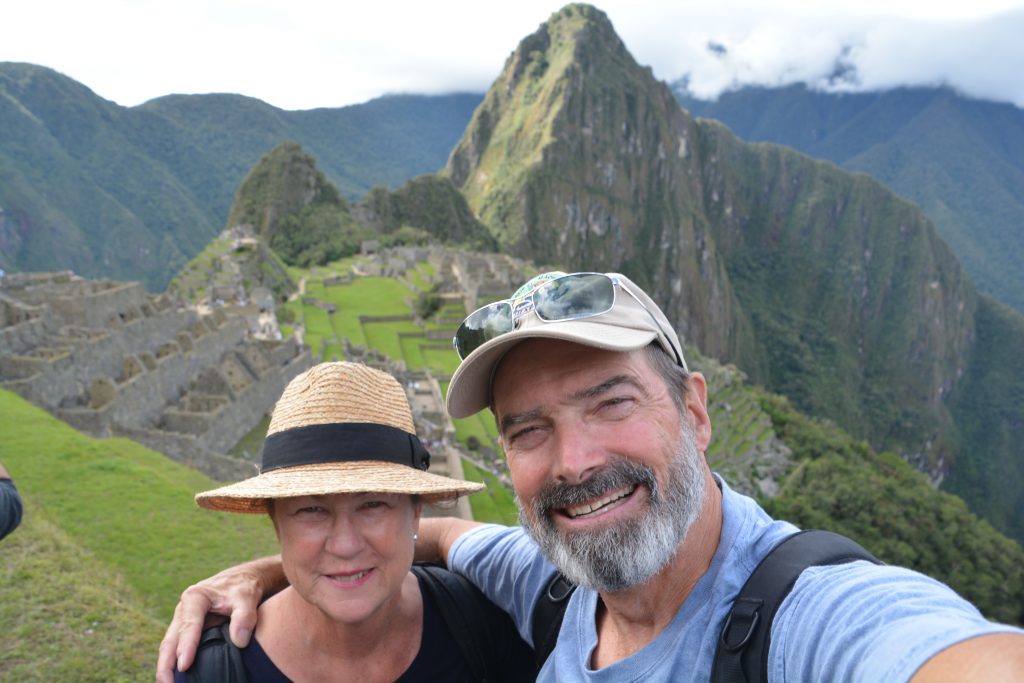
Big grins all around, and why not, we’re in Machu Picchu! And for me something a little extra special because I had been here more than 40 years ago
As the afternoon waned and the sun lowered its guard the crowds slowly cleared out and we shared the ruins with only a handful of people. We couldn’t get enough of the setting and the wonder of what it must have been like to live in such a grand place 700 years ago. The guards finally blew their whistles and shepherded us out but we were on the last bus down the mountain.
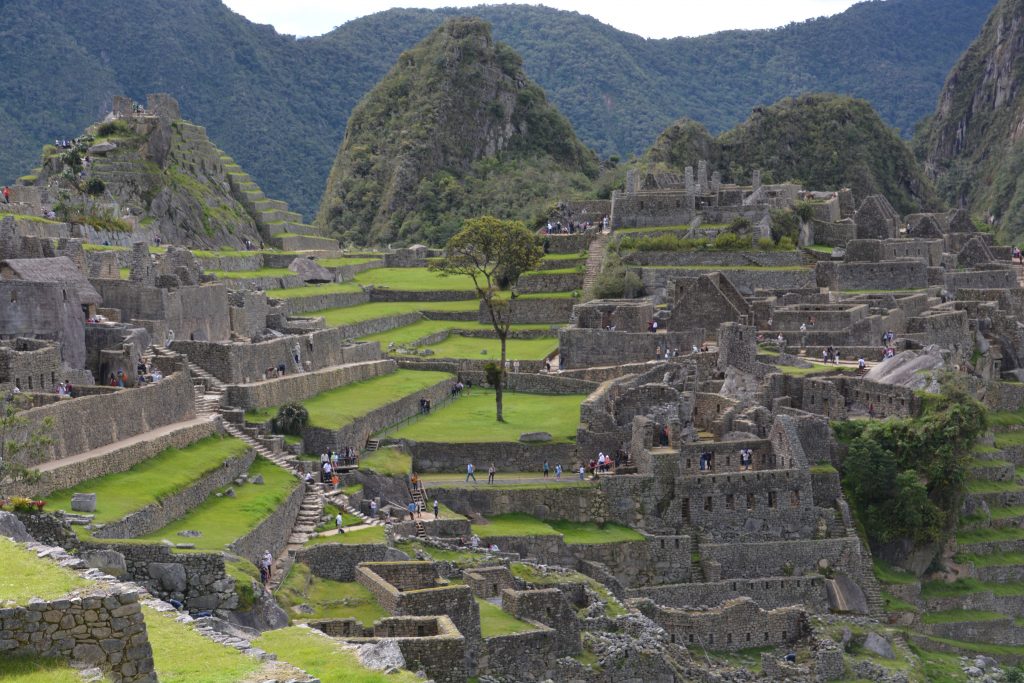
Machu Picchu has kept many of its secrets but what we know is good enough – this must have been an exceptionally special place to live all those years ago
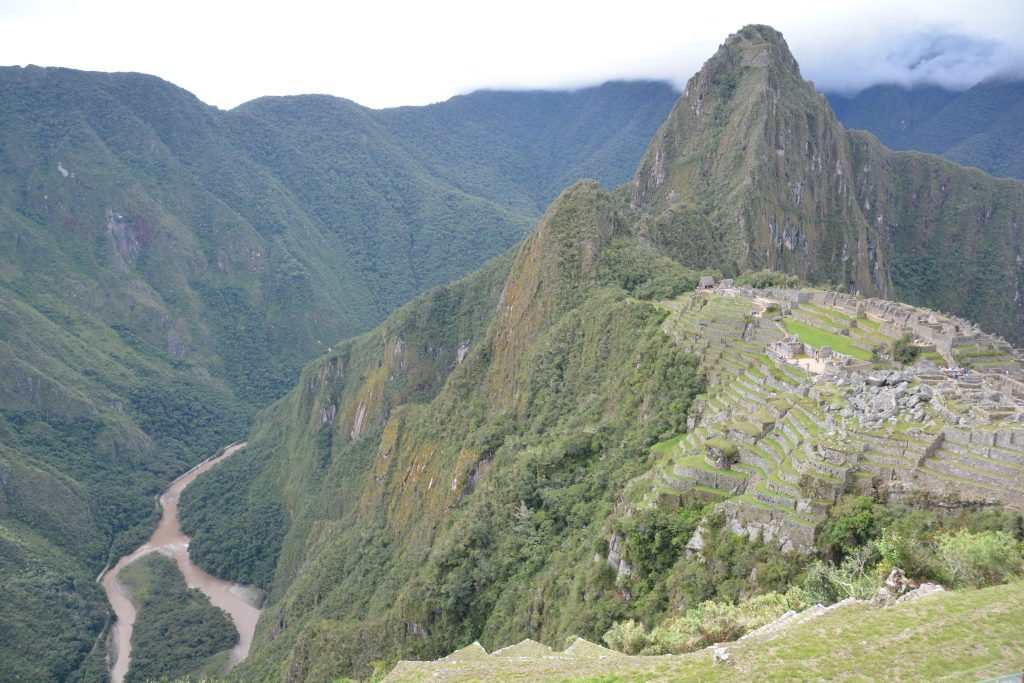
One of the most amazing aspects of Machu Picchu is its extraordinary location – have a look at the extreme drop into the valley below
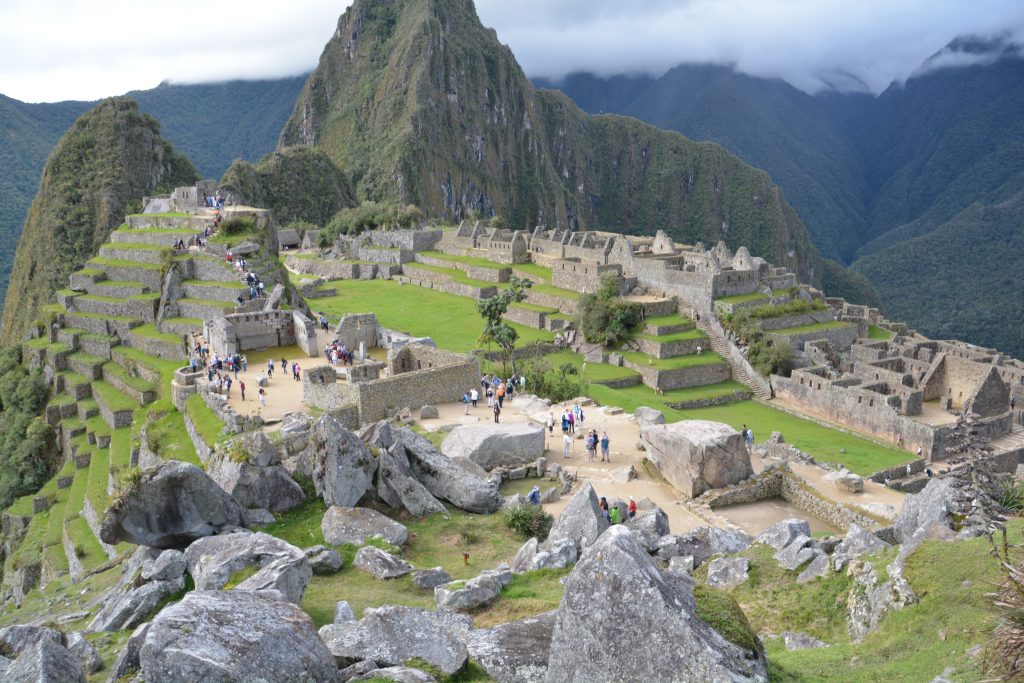
Machu Picchu delivered on all accounts but the imposing mountain of Waynu Picchu, acting as a guard above the ruins, really capped it off
And for me the visit to Machu Picchu had added meaning because I had been carrying the memories of my first visit for 41 years. The site of the ruins was much bigger than I remembered and the dramatic setting perched so high on vertical cliffs with high mountains all around had deteriorated in my mind. On my first visit I had climbed the overlooking peak of Waynu Picchu to watch the sun rise, today we just admired its vertical grandeur.
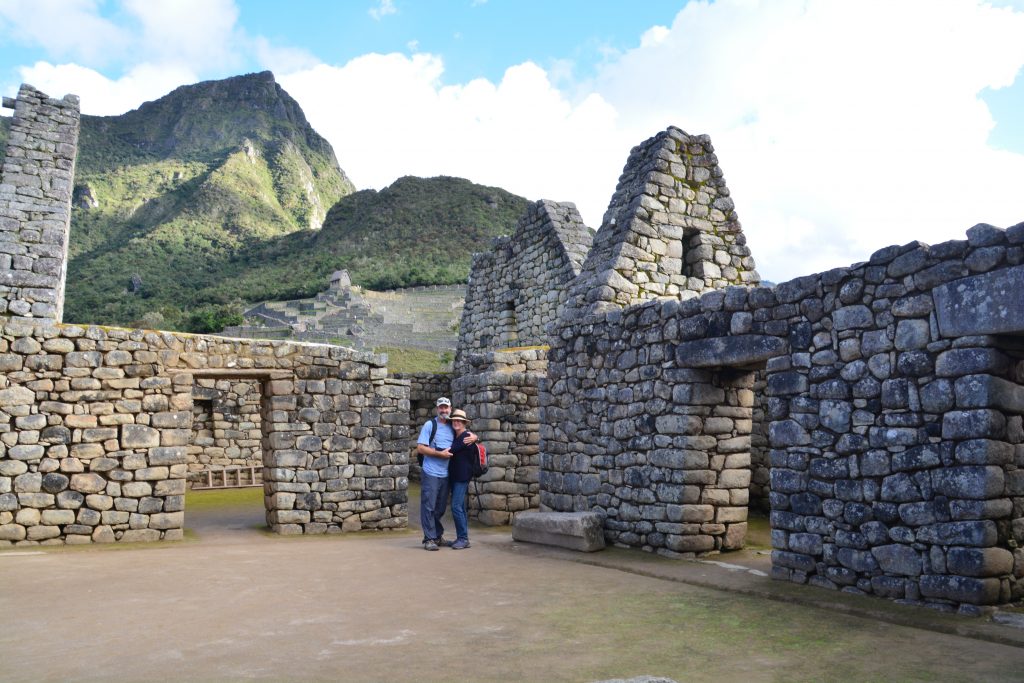
Julie and I decided that if we had lived in Machu Picchu we would have liked a comfortable home like this one – plenty of room for the family, great views, good resale value
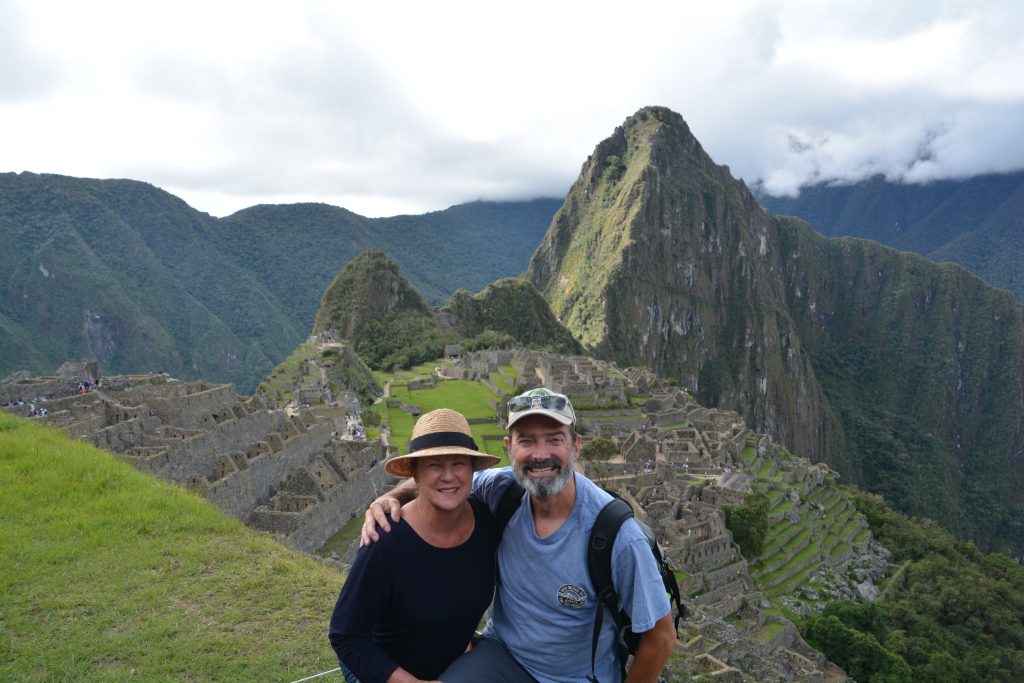
Well, its probably safe to say we’ll never come back to Machu Picchu but the whole experience has been absolutely fabulous – an experience of a lifetime
After catching the last train back to the patiently waiting Tramp in Ollantaytambo we didn’t tuck in until after midnight and woke to Easter morning with blue skies and glorious mountains all around us. In Peru Easter is only a religious celebration and there were no Easter eggs, Easter bunnies or chocolate anywhere to be seen. Julie was very disappointed about the chocolate part.
We explored the Incan ruins of Ollantaytambo, perched precariously on the steep mountain overlooking the village. As we caught our high altitude breath after climbing the steep terraces and gazed down on the magnificence of the Sacred Valley we remembered that last year on Easter Sunday we were in New Orleans watching three different parades, joining the street parties amongst all the glitter and frivolity and drinking too much. The contrast between last year and this year couldn’t be greater.
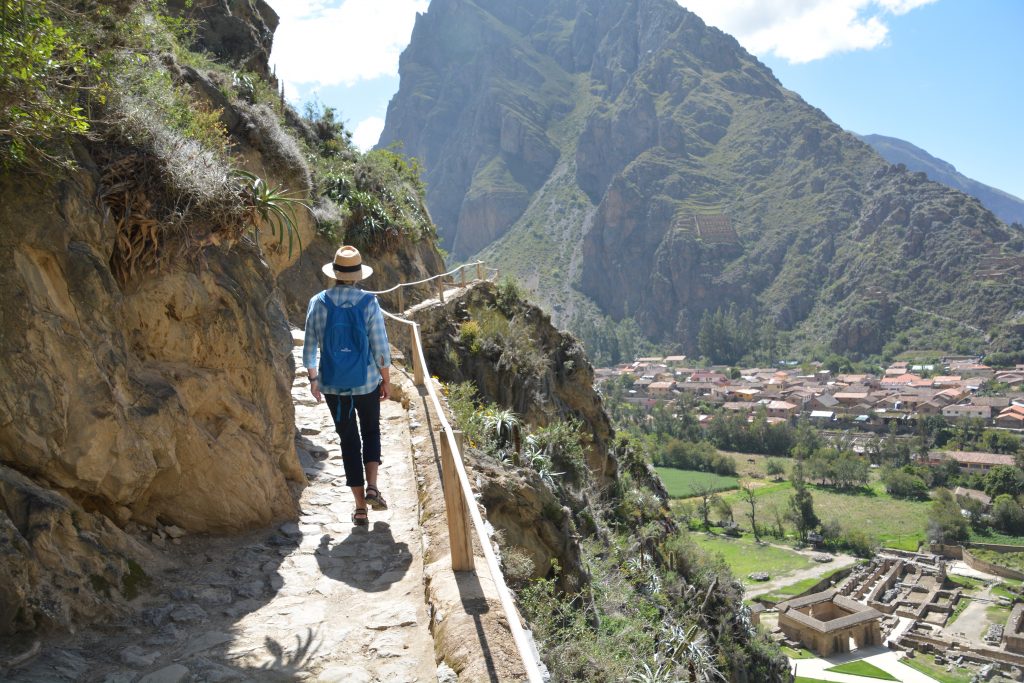
The ruins of Ollantaytambo also had a dramatic setting and the village nearby has been continuously lived in since before Incan times
We followed the Urubamba River up the Sacred Valley, goggling at the steep mountain sides, high terraced plots and quaint villages. At Pisac we switchbacked our way up to another set of Incan ruins, this one famous for its elaborate and extensive terraces.
At the sleepy town of Sicuani we headed south up and over the mountains and as the late afternoon sun did its magic on the rolling hills we passed the 4,000 metre mark at Lake Langui Layo. We climbed more up a rough dirt track and found a dramatic place to camp overlooking the lake which provided panoramic views of the mountains all around. Our camp that night was at a dizzying 4,340 metres, or 14,235 feet, our highest camp by far, bringing on a shortness of breath for the smallest of tasks, lack of appetite, exploding beers, restless sleep and a general dull roar between the ears.
Our time amongst the Incans was now behind us but we still had more to see in Peru, more switchbacks to negotiate, more amazing places to see and more of these wonderful Andes mountains.















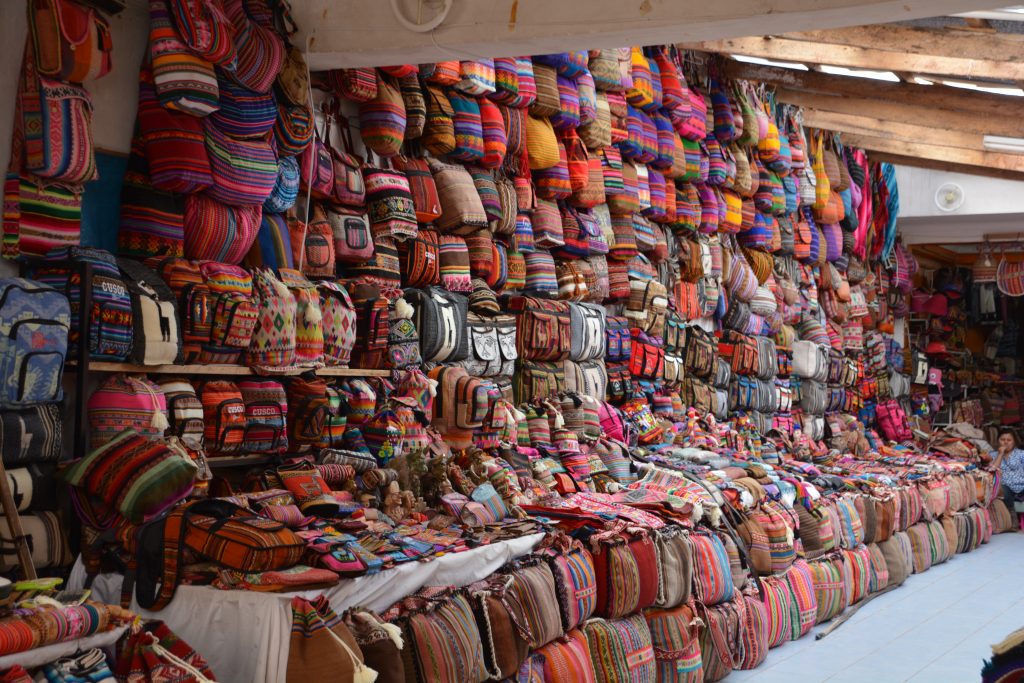




Comments
Cusco and Machu Picchu — No Comments
HTML tags allowed in your comment: <a href="" title=""> <abbr title=""> <acronym title=""> <b> <blockquote cite=""> <cite> <code> <del datetime=""> <em> <i> <q cite=""> <s> <strike> <strong>